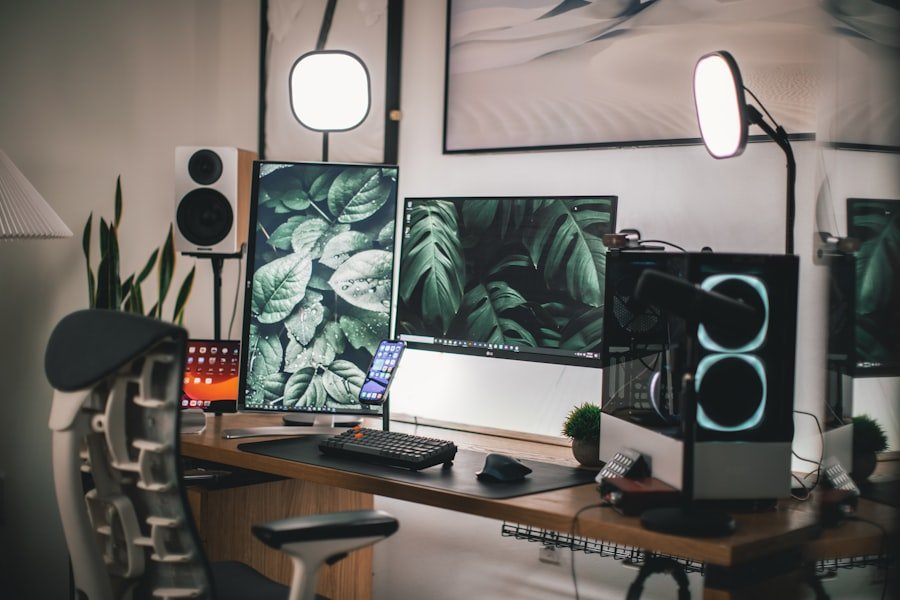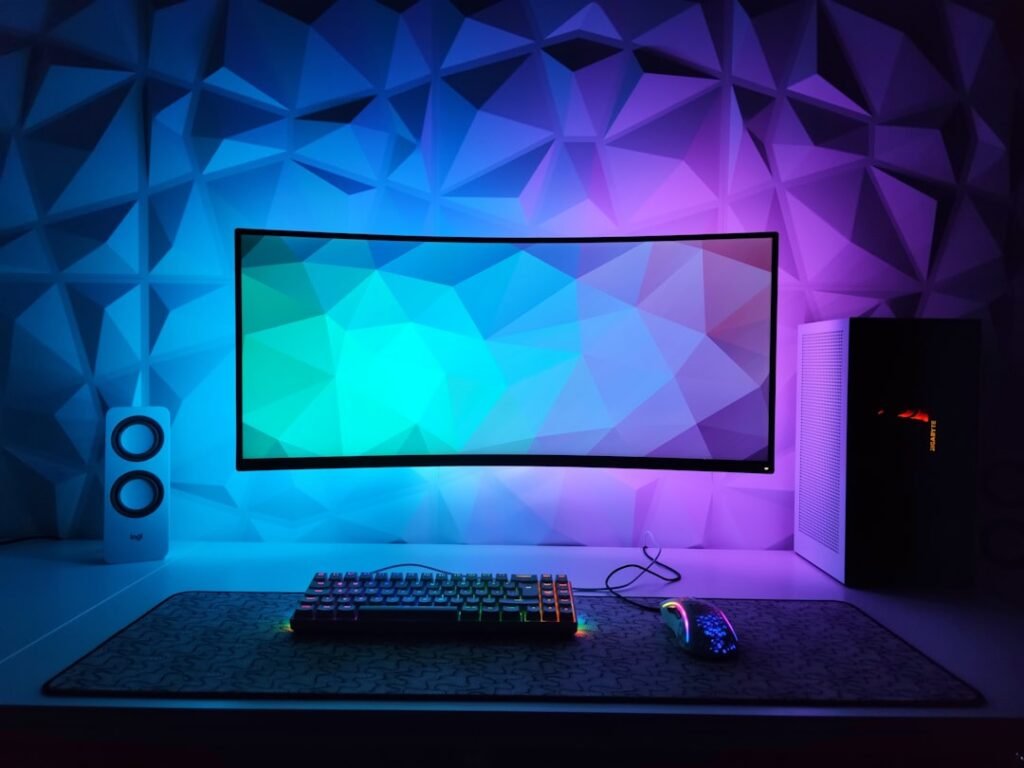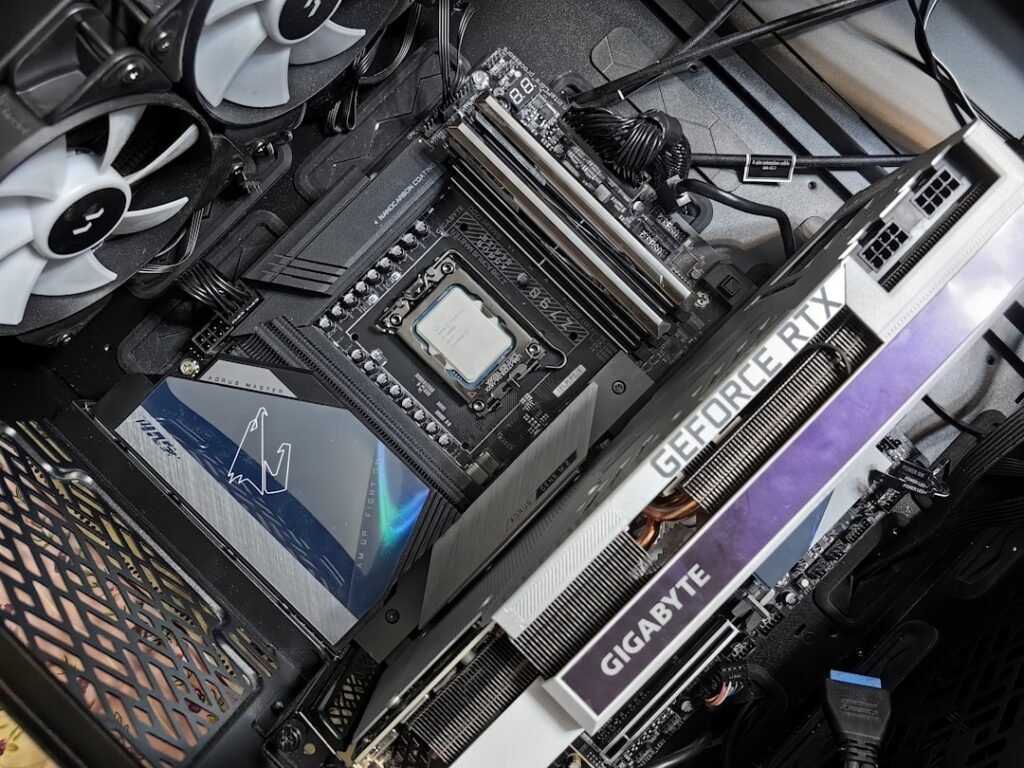In the realm of computer graphics and gaming, NVIDIA has established itself as a titan, renowned for its cutting-edge technology and innovative designs. Founded in 1993, the company has consistently pushed the boundaries of what is possible in visual computing. NVIDIA video cards, or graphics processing units (GPUs), are at the heart of this evolution, providing gamers and professionals alike with the power to render stunning visuals and complex computations.
From the early days of 2D graphics to the current era of ray tracing and artificial intelligence, NVIDIA has been a driving force behind the advancements that have transformed the gaming landscape. The significance of NVIDIA video cards extends beyond mere performance; they embody a commitment to quality and reliability. With a diverse range of products tailored to various user needs—from casual gamers to hardcore enthusiasts—NVIDIA has something for everyone.
The introduction of technologies such as G-SYNC, DLSS (Deep Learning Super Sampling), and real-time ray tracing has further solidified NVIDIA’s position as a leader in the industry. As we delve deeper into the benefits and features of these powerful GPUs, it becomes clear why they are often the preferred choice for gamers seeking an unparalleled experience.
Key Takeaways
- NVIDIA video cards are a popular choice for gamers due to their high performance and advanced features.
- The benefits of NVIDIA video cards include superior graphics, smooth gameplay, and support for advanced technologies like ray tracing and DLSS.
- When choosing the right NVIDIA video card, consider factors such as budget, desired resolution and frame rates, and compatibility with your gaming setup.
- Installing and setting up your NVIDIA video card involves physically installing the card, downloading the latest drivers, and optimizing settings for your games.
- To optimize your gaming experience with NVIDIA video cards, consider adjusting graphics settings, utilizing NVIDIA’s software features, and keeping drivers up to date.
Understanding the Benefits of NVIDIA Video Cards
Unparalleled Performance for Demanding Tasks
Whether you’re playing the latest AAA titles or engaging in resource-intensive tasks like video editing and 3D rendering, NVIDIA GPUs are designed to handle demanding workloads with ease. The architecture behind these cards, particularly the Ampere and Ada Lovelace architectures, allows for improved power efficiency and higher frame rates, ensuring that users can enjoy smooth gameplay without compromising on visual fidelity.
Innovative Software Tools and Technologies
NVIDIA’s commitment to innovation is evident in its suite of software tools and technologies that enhance the overall user experience. Features such as NVIDIA Reflex reduce latency in competitive gaming scenarios, giving players a crucial edge over their opponents. Additionally, the GeForce Experience application provides automatic game optimization, driver updates, and even in-game recording capabilities, making it easier than ever for users to get the most out of their hardware.
Elevating the Gaming Experience
These benefits not only elevate gaming performance but also streamline the overall experience, allowing users to focus on what truly matters: enjoying their favorite games.
Choosing the Right NVIDIA Video Card for Your Gaming Needs

Selecting the ideal NVIDIA video card can be a daunting task, given the plethora of options available on the market.
For casual gamers who primarily play less demanding titles or engage in light gaming, entry-level options like the GeForce GTX 1650 or GTX 1660 may suffice.
These cards offer solid performance at 1080p resolution without breaking the bank. On the other hand, avid gamers who crave high-resolution experiences and ultra settings will want to explore mid-range and high-end models such as the GeForce RTX 3060 or RTX 3080. These GPUs not only support ray tracing but also leverage DLSS technology to enhance performance without sacrificing image quality.
For those who seek the pinnacle of gaming performance, flagship models like the RTX 4090 provide unparalleled power and future-proofing capabilities. Ultimately, understanding your specific gaming needs and aligning them with the right GPU will ensure that you make a choice that enhances your overall experience.
Installing and Setting Up Your NVIDIA Video Card
| Step | Description |
|---|---|
| 1 | Check system requirements for the NVIDIA video card |
| 2 | Download the latest drivers from the NVIDIA website |
| 3 | Disable the integrated graphics card in the BIOS |
| 4 | Install the NVIDIA video card into the appropriate slot on the motherboard |
| 5 | Connect the necessary power cables to the video card |
| 6 | Boot up the computer and install the NVIDIA drivers |
| 7 | Restart the computer and configure the video card settings |
Once you have selected your NVIDIA video card, the next step is installation. While this process may seem intimidating for some, it can be straightforward with careful preparation and attention to detail. Begin by ensuring that your computer case has adequate space for the new GPU and that your power supply unit (PSU) can support its requirements.
It is advisable to consult your GPU’s specifications for power consumption details and connector types. After preparing your system, power down your computer and unplug it from the wall. Open your case and locate the PCIe slot on your motherboard where you will install the GPU.
Carefully remove any existing graphics card if necessary, then gently insert your new NVIDIA video card into the PCIe slot until it clicks into place. Secure it with screws if required, connect any necessary power cables from your PSU, and close your case. Once everything is reassembled, plug your computer back in and power it on.
The installation process is complete when you install the latest drivers from NVIDIA’s website or through GeForce Experience, ensuring optimal performance from your new hardware.
Optimizing Your Gaming Experience with NVIDIA Video Cards
To truly harness the power of your NVIDIA video card, optimization is key. The first step involves adjusting in-game settings to strike a balance between performance and visual quality. Many modern games come equipped with preset configurations that can be tailored based on your GPU’s capabilities.
Utilizing features like DLSS can significantly boost frame rates while maintaining impressive graphics quality, allowing for a smoother gaming experience even in graphically demanding scenarios. In addition to in-game adjustments, leveraging NVIDIA’s software tools can further enhance your gaming experience. The GeForce Experience application not only provides automatic driver updates but also offers game optimization settings tailored specifically for your hardware configuration.
By enabling features such as G-SYNC, you can eliminate screen tearing and stuttering during gameplay, resulting in a more immersive experience. Furthermore, exploring additional settings like ambient occlusion or texture filtering can help you fine-tune visuals according to your preferences.
Troubleshooting Common Issues with NVIDIA Video Cards

Despite their robust design and performance capabilities, users may occasionally encounter issues with their NVIDIA video cards. Common problems include driver conflicts, overheating, or performance drops during gameplay. When faced with such challenges, it is essential to approach troubleshooting methodically.
Start by ensuring that you have installed the latest drivers from NVIDIA’s website or through GeForce Experience; outdated drivers can lead to compatibility issues with newer games. If you experience overheating, check that your GPU’s cooling system is functioning correctly. Dust buildup can obstruct airflow, so regular cleaning of fans and heatsinks is advisable.
Additionally, monitoring software can help track temperatures during gameplay to identify potential overheating issues before they become critical. If performance drops occur during specific games, consider adjusting graphics settings or verifying game files through platforms like Steam to ensure everything is functioning as intended.
Upgrading Your NVIDIA Video Card for Future Gaming Needs
As technology continues to advance at a rapid pace, upgrading your NVIDIA video card may become necessary to keep up with evolving gaming demands. New titles often push hardware limits further than ever before, necessitating more powerful GPUs for optimal performance. When considering an upgrade, evaluate your current system specifications alongside upcoming game releases to determine whether your existing card will suffice or if a more powerful model is warranted.
When upgrading, it is crucial to assess compatibility with your existing hardware components. Ensure that your motherboard has an available PCIe slot and that your PSU can handle the increased power requirements of a new GPU. Additionally, consider future-proofing by investing in a model that not only meets current demands but also has the potential to handle upcoming technologies such as ray tracing or higher resolutions.
By making informed decisions about upgrades, you can ensure that your gaming rig remains capable of delivering exceptional experiences for years to come.
Enjoying the Ultimate Gaming Experience with NVIDIA Video Cards
In conclusion, NVIDIA video cards represent a cornerstone of modern gaming technology, offering unparalleled performance and innovative features that enhance every aspect of gameplay. From their impressive capabilities in rendering stunning graphics to their advanced software tools that optimize user experience, these GPUs are designed to meet the needs of gamers at all levels. By understanding their benefits, choosing the right model for your needs, and optimizing settings effectively, you can unlock the full potential of your gaming rig.
As you embark on your gaming journey with an NVIDIA video card, remember that technology is ever-evolving. Staying informed about upgrades and advancements will ensure that you remain at the forefront of gaming experiences. With careful consideration and proactive management of your hardware, you can enjoy countless hours of immersive gameplay while embracing all that NVIDIA has to offer in this dynamic landscape of digital entertainment.
In a related article, Vehement Capital Partners has partnered with ACME to bring its podcast platform to Europe, showcasing the importance of strategic partnerships in expanding reach and influence. This collaboration mirrors NVIDIA’s own partnerships with various companies to enhance their products and services. To read more about this exciting development, check out the article here.
FAQs
What are NVIDIA video cards?
NVIDIA video cards are hardware components designed to process and render graphics for computers. They are used to improve the visual performance of a computer, especially for gaming, video editing, and other graphics-intensive tasks.
What are the benefits of using NVIDIA video cards?
NVIDIA video cards offer improved graphics performance, faster rendering speeds, and support for advanced features such as ray tracing and AI-enhanced graphics. They also provide better support for gaming and professional applications.
What are the different series of NVIDIA video cards?
NVIDIA offers a range of video card series, including the GeForce, Quadro, and Tesla series. The GeForce series is designed for gaming and consumer use, while the Quadro and Tesla series are targeted at professional and enterprise users.
What is ray tracing and how does it relate to NVIDIA video cards?
Ray tracing is a rendering technique that simulates the way light interacts with objects in a scene, creating more realistic and immersive visuals. NVIDIA video cards, especially those in the RTX series, are optimized for ray tracing and offer improved performance for games and applications that utilize this technology.
What factors should be considered when choosing an NVIDIA video card?
When choosing an NVIDIA video card, factors to consider include the intended use (gaming, professional work, etc.), budget, compatibility with other hardware components, and the specific features and performance requirements for the desired applications.



